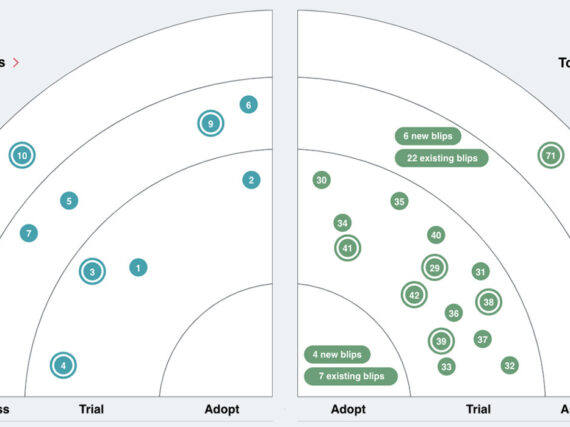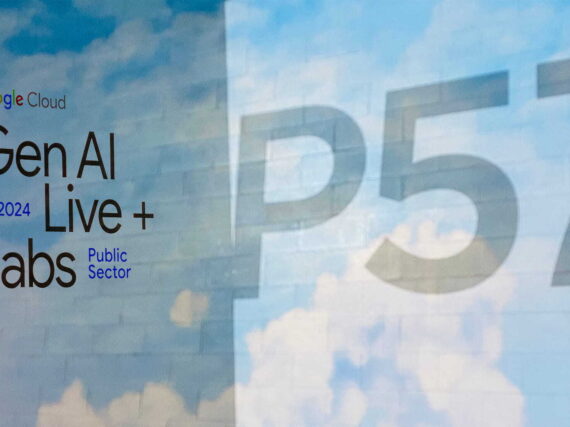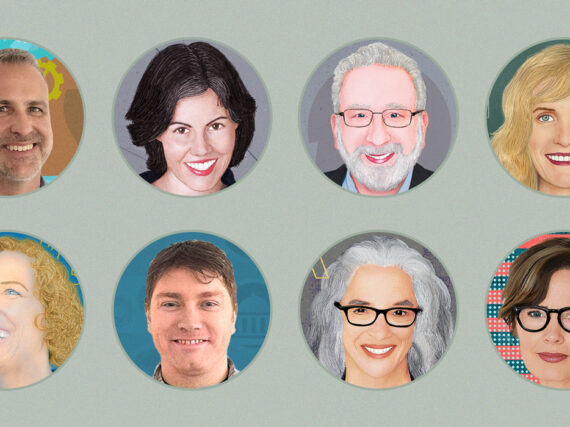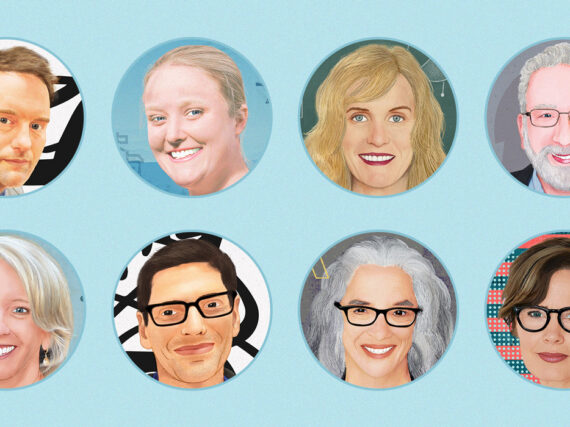Government has been under pressure of late to deliver greater technical innovation and transparency to its citizens, but this work can be limited by budgets and support. In response, citizens are becoming more involved via the civic tech movement to fill in the gaps, via organizations such as Code for America (CFA). CFA’s mission is to make government more responsive to the demands of the digital age via a network of local volunteers and government partnerships.
As a software development company, we often promote the multitude of ways that technology can improve the delivery of government services. (See The ‘No Wrong Drawbridge’ Approach.) However, due to our size, we are not always able to take on smaller projects in our community. CFA appealed to us as a way to bring our skills with agile, open-source development, and user-centered design to local efforts.
To find out more, we attended our local CFA brigade meeting in Portland, Maine.
A local-national movement
The Open Maine brigade meets once a month to discuss civic issues, and create useful technology applications to improve the lives of local citizens. As brigade leader Emma Burnett states, “Civic tech is a movement to modernize government. But more important than that, it’s about humanizing government. And placing the needs of people – the same taxpayers who pay for the service – at the heart of the process.”
Governments face a conflict between citizens wanting the public sector to solve a wide scope of issues (some of which may be deemed less mission critical), with too much government intrusion. Additionally, agencies may struggle with limited resources, overstretched budgets, and legislative parameters that determine what can and cannot be done to provide innovative solutions, especially at the local level.
On a national level, CFA provides a framework for “a new approach to government in the digital age – driving policy and operations delivery to effectively achieve the goals of government policies,” according to the CFA site.
Citizens, with the guidance of organizations like CFA, have been taking the bull by the horns to create quicker and more efficient solutions without taxing government resources. This movement enables large-scale citizen engagement for the development and delivery of public services. CFA projects also promote greater transparency and trust between government, and citizen users.
Furthermore, these predominantly technology focused solutions tend to resonate with a younger demographic, according to Civic Tech. Civic-minded Millennials and Gen Zs can bring their expertise and energy to areas that need it, and see the positive results of their actions.
Civic tech initiatives
The enthusiasm of such volunteers has helped bring about the success of the following civic tech initiatives.
GetCalFresh started in a grassroots way when civic techies set up a fax automation so people could fill out and fax different forms into the department instead of mail-in paperwork. It’s now working in collaboration with other government and county partners to reduce from 45 minutes to less than eight minutes the process of applying, or reapplying, for benefits.
The Clear My Record tool acts as an opt-in service for people seeking to clear or change their criminal record. It helps the millions of people who are shut out of the workforce, or unable to fully reintegrate into their communities, due to previous incarceration.
The Who Owns What grassroots effort reported in the New York Times demonstrates the success of civic coders using their skills to tackle affordable housing and bad landlords in New York City.
While many successful initiatives have been grassroots driven, others like two $1 million Bloomberg Philanthropies-funded projects in Alaska and New York have benefited from large donor support. Alaska aimed to tackle climate change by “blending art and technology, in the hopes of spreading awareness about climate change while developing solutions,” as reported by GovTech. New York State tried to tackle social policy issues, “using art to make vacant buildings look alive,” reported the Times Union, which promoted awareness of inhabited versus uninhabited buildings and social blight.
Benefits for everyone
As Jason Hibbets writes in his recent post on this topic, there are many benefits for the volunteers, including leadership development. “We are all volunteers, we are all trying to advance the civic tech movement, and we have such a tremendous opportunity to learn from each other and grow as individual leaders.”
It allows future government leaders to get a taste of solving real world problems, according to Steve Kelman, writing for the Business of Federal Technology, while deploying “modern tech skills, including agile software development, user-centered design, and product management.”
In addition, across the country, we are seeing an increase in data used for decision making, says GovTech, and a greater willingness for government entities to make it public. Allowing this data to be accessed by civic tech movements shares the load of developing citizen-centric solutions, as noted by GovInsider. This should lead to more robust decisions, and potentially more public/private sector collaboration. If properly managed, the benefit for government leaders and taxpayers is obvious: faster solutions, developed at lower cost.
Tools for success
The World Economic Forum pointed out in 2014 that the civic tech movement needed better tools and more support to be successful. It’s come a long way since then with the following guidelines.
To optimize success, CFA strives to do three things:
- Be good at digital
- Ensure policy and implementation work together, and are centered around the needs of the people
- Be a platform for civic engagement and participation
CFA also recommends a structured roadmap to ensure project success:
- Conduct research to examine people’s needs
- Ensure that everyone can participate, including community members who might otherwise be overlooked
- Deploy multiple techniques like an agile methodology, lean scrum, and human-centered design to create small incremental benefits and progress
- Continuously adding improvements using real-time data to inform decision making
Furthermore, the civic tech movement promotes open source technologies, which allow for multiple contributors to add to a project.
Open Maine brigade
In the effort to to find a project to match their skills, three of our team attended the Open Maine brigade meeting last month. We spoke with brigade leaders, Emma Burnett and Nick Kaufmann, to learn more about what’s going on in our own backyard.
There was some insightful discussion regarding the recent election and technology, including Maine’s use of rank choice voting. We also learned that past projects launched in Maine have included:
- Civic Design Fest: A daylong event with more than eight civic tech projects ranging from redesigning public meeting rooms to participatory maps of Portland and voter scorecards
- Sidewalk buttler: Providing small cigarette repositories affixed to poles around town
- Polling place mapper: An accessible and current tool to find polling locations across the state
- Political scorecard: An open source voter scorecard system for groups to use when scoring legislative bills
- Transparency Portland: Cataloging and mapping campaign donations in Portland municipal elections
Tonight’s meeting will focus on more seasonal issues, such as how to use technology to solve winter problems. One item on the agenda is a mobile application to match people with clearing driveways, similar to the City of Boston’s project to partner people with fire hydrants to ensure they were cleared of snow.
Other future initiatives include an open source digital civics curriculum to develop an open source, place based, experiential civic tech curricula, to help in the transition from “project development” to “people development.”
Following the CFA mandate of applying rapid prototyping and user-centered design, projects are developed incrementally. Multiple people collaborate on each project in line with the agile methodology, so incremental progress can be seen and delivered.
In summary
With a long history of civic involvement in America, organizations like CFA continue this tradition of citizen-led innovation. Because the civic tech movement is about creating something of value for the local community, you don’t have to be technical to attend. These groups need ideas, support and input from a variety of people to make them successful.
In my experience, I’ve found I can lose sight of the humanizing aspects that grassroots civic projects often provide. It’s easy to assume we need significant resources to make a difference. However, sometimes it’s in the small, incremental steps that we take as individuals where real progress is made. It’s my hope that each hour collectively contributed to civic tech projects can really add up to move the needle.
As OpenMaine’s brigade leader, Burnett, says, “this is an organization where anyone with skills and time to give can come, join a team, and build something that benefits the community we live in.”
Writing this article has inspired me to further engage with civic tech in my area. I encourage you to join me. Our local brigade meets on the second Tuesday of the month (that’s tonight) at 6pm at Peloton Labs. If you happen to be free, I’ll see you there!
Learn more
- Open Maine
- Code for America
- Why Civic Tech Is The Next Big Thing (Forbes, 2015)







